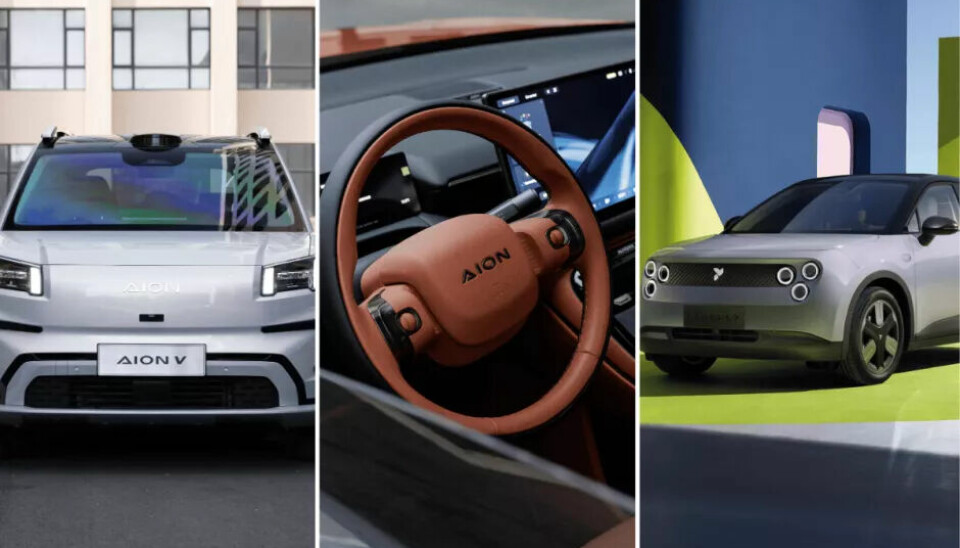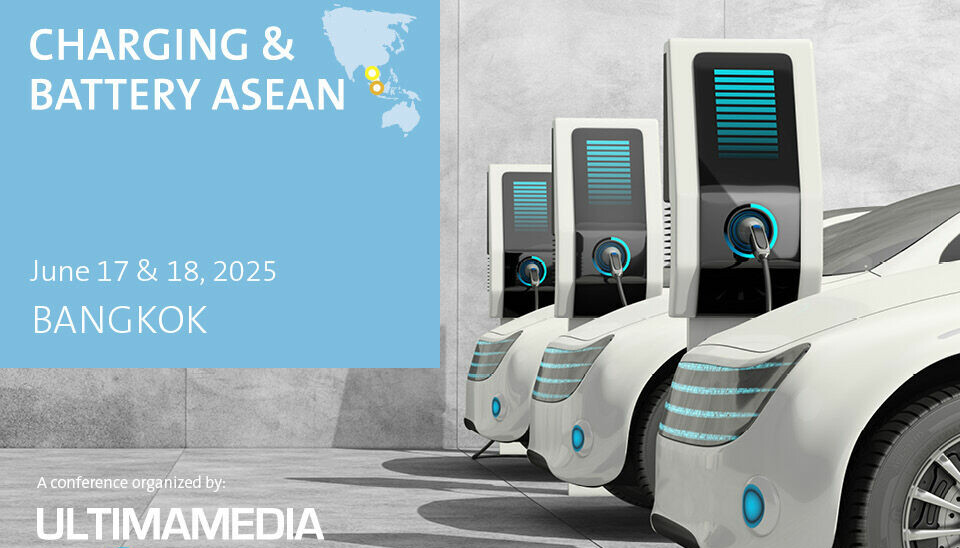Entry-level models from China
With These Cars, Nio and GAC Want to Conquer Europe

Nio and GAC have understood that European customers operate somewhat differently than those in their home market of China. It requires long-range and highly technological models that could occupy niches neglected by European OEMs until now.
There is no lack of high product quality in their battery electric cars. The fact that Chinese car brands in Europe are already falling short of their self-imposed sales targets before the tariffs come into effect is more due to hastily devised product and marketing strategies. Due to a lack of knowledge about brand awareness and purchasing behaviour of European target groups, successful Chinese manufacturers in their home country are almost recklessly launching new brands, whose products hardly differ from each other in driving characteristics.
Apart from the SAIC brand MG, which combines the tailwind of early market entry with the bonus of an established British brand name, Chinese brands are not getting off the ground in Europe. Not even industry leader BYD, despite using enormous financial resources. While 4.3 million BYD are sold worldwide in 2024, there are just 2,891 units in Germany. Meanwhile, more and more Chinese manufacturers are striving westwards to find an outlet for the dramatic competitive pressure in the home market. Two of them are now trying something different.
Nio relies on brands Onvo and Firefly
William Li set out ten years ago to interpret Elon Musk's American business model in a Chinese way with his startup Nio. But recently he declared 2026 to be Nio's year of destiny. With eight premium models and 20,000 units per month in 2024, it is not possible to break even. Now Li announces a daring plan: Nio is to become a mass manufacturer with smaller and cheaper models that expect less competition outside China. The new sub-brands Onvo and Firefly are to make it happen and finally make a profit with large quantities and high economies of scale.
The Onvo L60 has just been launched in China. Annually, 240,000 cars are expected to roll off the production line, each costing the equivalent of 26,000 to 30,000 euros. The entry-level model with a rented battery even for 19,000 euros. The L60 targets the world's most successful EV, the Tesla Model Y, which currently starts at 45,000 euros. In everyday Chinese traffic, we confirm that the L60 is not a compromise car. Thanks to its steel-aluminium hybrid structure, it weighs under two tonnes, has the lowest drag coefficient of all production SUVs at 0.23, and consumes a nominal 12.1 kWh/100km. The top version we drove, with all-wheel drive, has some weaknesses in operating comfort but impresses with thoughtful space utilisation and excels with semi-autonomous driving functions.
How can the Onvo L60 be operated and charged?
To unlock the L60, you slap a transponder card on the B-pillar of the driver's side. Unfortunately, the door only opens seconds later. Inside, the dashboard is unsurpassed in simplicity. Besides the steering wheel with two rotary switches, there is only a central 17.2-inch touch display for all comfort and secondary driving settings. The voice control via the AI-supported voice robot Xiaole works excellently. Of course, it also has lexical knowledge and responds selectively via seat-near individual speakers. So far, only in Chinese. A cockpit instrumentation is omitted in favour of a 13-inch head-up display that projects necessary driving information onto the windscreen. For rear passengers, there is an 8-inch display on the centre console for adjusting comfort functions.
The Onvo L60 uses the world's first 900-V architecture, a 60-kWh LFP battery or an 85 kWh NMC battery. At a standard fast-charging station, we recharge the larger battery with a remaining range of 65 kilometres. Onvo promises to add 200 kilometres of range in ten minutes, which we do not achieve. The very reliable NOA driving functions (Navigate on Autopilot) include initiated overtaking manoeuvres, safe lane changes and turns in city traffic, as well as fully automatic parking and unparking. 30 high-performance sensors, including six lidars, seven cameras, a millimetre-wave radar, and 22 ultrasonic sensors, provide information that a Nvidia Orion X chip (254 TOPS) processes and compares with input scenarios.
Firefly aims to steal VW's budget electric car market share
With the Firefly sub-brand, Nio is making an even deeper push into the A-segment for electric cars around 20,000 euros, which Volkswagen calls the "Champions League of the automotive industry." While the Wolfsburg-based company is currently showcasing a first concept vehicle of the ID.1, expected to be market-ready by 2027, Nio is launching its cute Firefly four-seater in China as early as mid-2025. A few months later, it will come to us. Firefly also uses the 900-V platform, a 42.1 kWh LFP battery for a good 300 km range (WLTP), and pre-developed components from the Nio shelf.
An average consumption of only 10 kWh/100 km is targeted. In addition, the brand plans to include a cheaper, even smaller battery and a small internal combustion engine on board to extend the range. The EREV (E-car with range extender) will only be offered outside China, it is said. In Europe, it would be exempt from punitive tariffs, which currently hit Nio's EVs with 20 percent.
GAC cautiously ventures into Europe
The Chinese state-owned company GAC is hardly known in this country. As one of China's oldest car manufacturers, its NEV sales (New Energy Vehicle), which also include PHEVs (Plug-in Hybrids), rank third worldwide behind Tesla and BYD. GAC is comparatively late in targeting the European market, following a cautious strategy. It is said that lessons have been learned from the mistakes of competitors, and they do not want to overextend the offering or proliferate with numerous sub-brands.
Initially, comprehensive exploration will take place in Poland, Portugal, and Norway. With an SUV and a hatchback sedan from the sub-brand Aion, which is popular in the Chinese mass market. A little later, Aion V and Aion UT will be introduced in Central Europe through local dealer networks. EREVs are also being considered. The goals are defined, confirms Thomas Schemera, who comes from BMW via Hyundai and Kia, as the person responsible for GAC's foreign business. However, he still has to pave the way.
Aion offers compact price breakers
Both the compact SUV Aion V for the C-segment and the Aion UT for the A-segment are built on the scalable AEP 3.0 platform. While the V delivers 150 kW/204 hp, powered by a 75.3 kWh battery for a nominal range of 521 kilometres (WLTP), the UT's electric motor delivers 150 kW/204 hp, supplied by a 60 kWh battery, promising a nominal range of 430 kilometres (WLTP). Particularly competitive prices are targeted: the SUV is expected to be available in Europe for less than 35,000 euros, the ID.3 competitor UT for around 28,000 euros.
For this, the customer gets unpretentious price breakers with spacious interiors. Both vehicles feature a 14.6-inch central tablet and an 8.9-inch cockpit display, their interior design follows the common Chinese pattern. However, the lavish equipment of the Aion V is striking. Electrically adjustable, heated and ventilated front seats, window openers, a dimmable sunroof and heated leather steering wheel are on board, as well as a two-zone climate control and a cooling or heating box under the centre armrest. The infotainment system can be voice-controlled from four seats. 13 assistance systems support the driver, exterior cameras provide a 360-degree view on the central display.
The hatchback sedan Aion UT is similarly lavishly equipped. The usability of comfort and secondary driving functions as well as the logical structure of the apps in the infotainment system are exemplary. If the voice recognition can soon communicate with Europeans, the international competition will have to brace itself.
This article was first published at automotiveit.eu

















